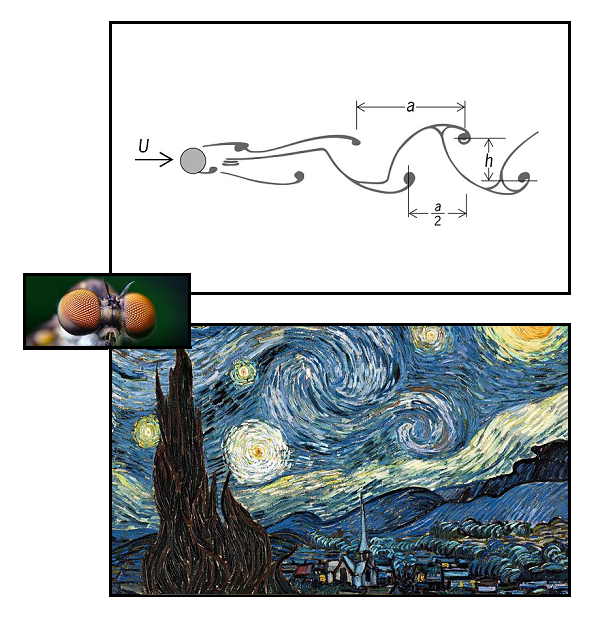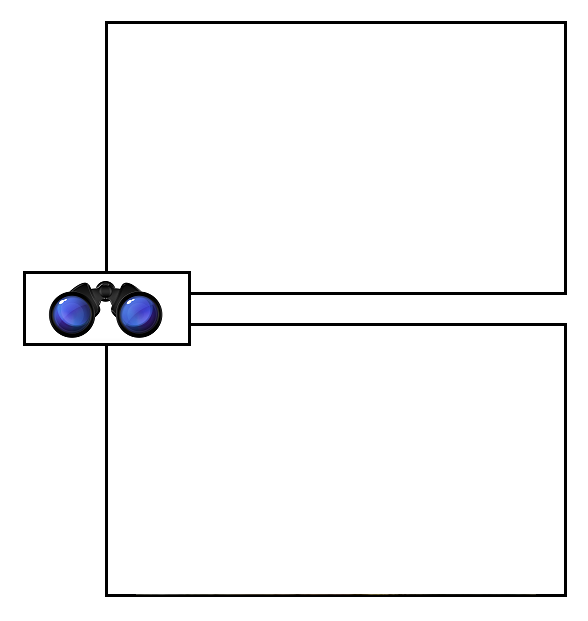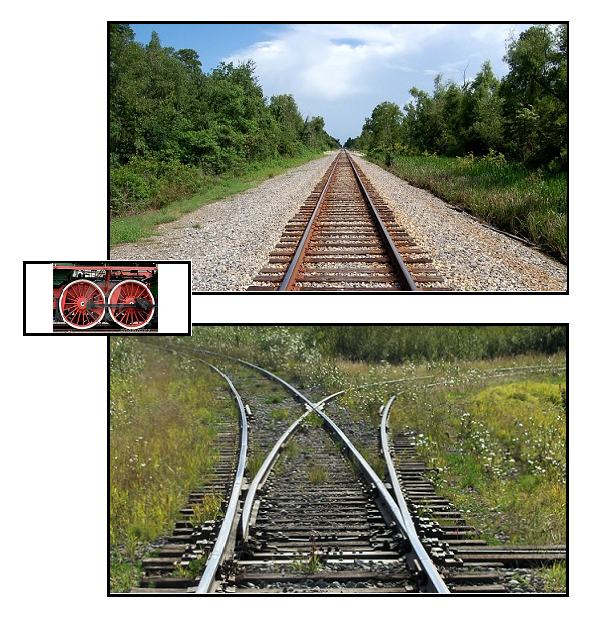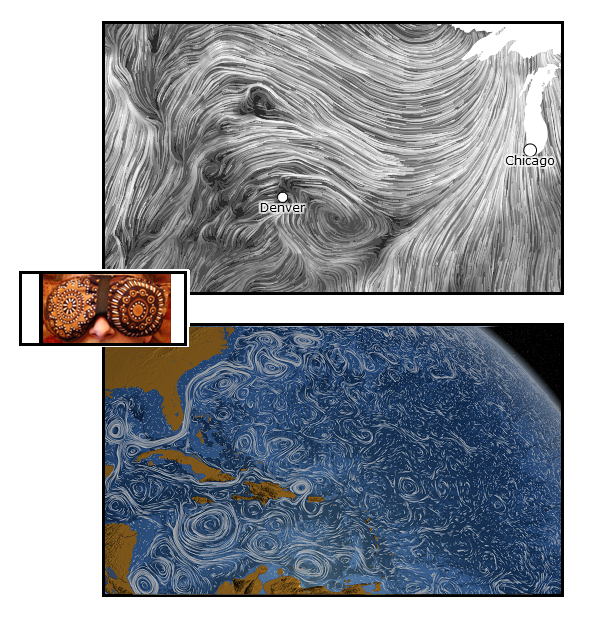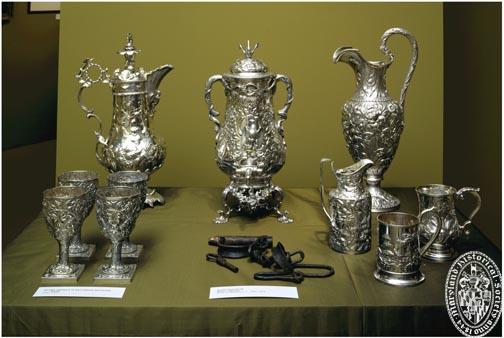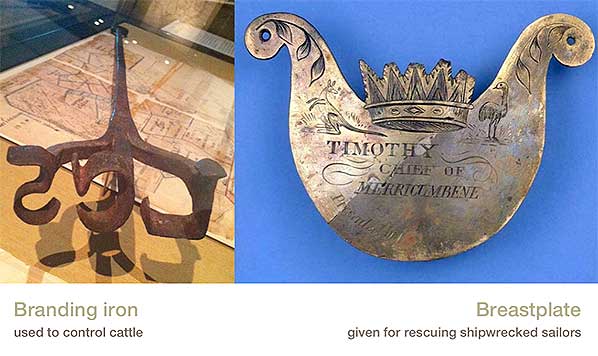An essay woven of Sembl thinking: Gary Snyder, Han Shan, Dogen, Thoreau, Smokey & MIT…

Gary Snyder is the fellow in the upper panel with the mountains behind him. Han Shan — whose name means Cold Mountain, which was also the name of the place he lived — is the fellow showing a poem to his friend in the lower panel. Dogen Zenji is the fellow who gave us the Mountains and Rivers Sutra. Thoreau is the fellow who retired for a while to Walden Pond. Smokey the Bear you know. And MIT is where Gary Snyder received the Henry David Thoreau Prize last Tuesday.
All are worthy of your attention, but in combo they’re unbeatable.
MIT:
MIT’s an interesting place to crop up in an account of Snyder — a poet, a Californian living high and away in the Sierras, and one of the first westerners to sit Zen and study in a monastery in Japan… And yet it’s curiously appropriate. Snyder is not here to banish science with poetry, but to enhance poetry with science, science with poetry, and both with his keen eye for context and honest detail.
He’s interested in weather. Understanding weather is in all our interests, but Snyder is actively interested. He’s interested in mountains and rivers, which comes to much the same thing — and he would surely have been interested in this exhibit that opened at MIT on Friday, just three days after his award ceremony there:

I dropped this image in here because it shows mountains and glaciers — but not without end. The loss of glaciation would concern Snyder — we know he’s interested in such things both immediately and in the long term, not only from his ecological writings in prose, but also because there’s a section of his epic Mountains and Rivers Without End that opens with these words:
“The 15 billion cubic kilometers of water on the earth are split by photosynthesis and reconstituted by respiration once every two million years or so.”
Even on that time-scale, Snyder’s interest in such things is personal: that section is titled We Wash Our Bowls in This Water.
So that’s the MIT part of the package.
Han Shan:
The terrific tale [link includes poems, too] of how a Chinese official learned that Han Shan and Shih-te, his laughing companion pictured above, were in fact great bodhisattvas though they looked like vagabonds could have come straight out of Jack Kerouac‘s Dharma Bums days. The official describes Han Shan:
He looked like a tramp. His body and face were old and beat. Yet in every word he breathed was a meaning in line with the subtle principles of things, if only you thought of it deeply. Everything he said had a feeling of Tao in it, profound and arcane secrets. His hat was made of birch bark, his clothes were ragged and worn out, and his shoes were wood. Thus men who have made it hide their tracks: unifying categories and interpenetrating things.
And here he describes how he arranged for the publication of Han Shan’s poetry:
I ordered Tao-ch’iao and the other monks to find out how they had lived, to hunt up the poems written on bamboo, wood, stones, and cliffs – and also to collect those written on the walls of people’s houses. There were more than three hundred. On the wall of the Earth-shrine Shih-te had written some gatha (Buddhist verse or song). It was all brought together and made into a book.
Gary Snyder it was, by the way, who turned Kerouac and the Beats onto Buddhism, and who features as Japhy Ryder in Kerouac’s Dharma Bums.
Gary Snyder:
Here’s Snyder again:

The first question that arises for me when I see photos of Gary Snyder like the ones above, I’ll admit, is whether it’s somehow axiomatic that his face should be as creased and rugged as the mountains he loves.
That’s a question for the intuition, really — but it may be worth noting that Emily Bronte saw a similar yet somewhat different correspondence between face and land and mentioned it in Wuthering Heights:
Catherine’s face was just like the landscape – shadows and sunshine flitting over it in rapid succession; but the shadows rested longer, and the sunshine was more transient; and her poor little heart reproached itself for even that passing forgetfulness of its cares.
People, and their eventual likeness to the places they live?
Let’s take this a little deeper. With respect to mountains, rivers and sages specifically, the great zen master Dogen teaches us in his Mountains and Rivers Sutra:
From time immemorial the mountains have been the dwelling place of the great sages; wise ones and sages have made the mountains their own chambers, their own body and mind. And through these wise ones and sages the mountains have been actualized. However many great sages and wise ones we suppose have assembled in the mountains, ever since they entered the mountains no one has met a single one of them. There is only the actualization of the life of the mountains; not a single trace of their having entered remains.
Dogen Zenji:
Dogen composed the Mountains and Rivers Sutra, which as far as I can tell is not available in book form except as a section of his longer work, the Shobogenzo. Snyder worked from 1956 to 1996 on his long poem series, Mountains and Rivers without End. The Cleveland Art Museum houses a scroll painting from the Northern Sung dynasty, Streams and Mountains Without End:

Translation — hey, second cousin to reincarnation?
An ancient Han Shan poem that’s also an early Snyder poem, Snyder here translating Han Shan:
I settled at Cold Mountain long ago,
Already it seems like years and years.
Freely drifting, I prowl the woods and streams
And linger watching things themselves.
Men don’t get this far into the mountains,
White clouds gather and billow.
Thin grass does for a mattress,
The blue sky makes a good quilt.
Happy with a stone under head
Let heaven and earth go about their changes.
Of both men you might say: the dwelling place is where the mind dwells.
Smokey the Bear:
Snyder has his own sutra. It is called the Smokey the Bear Sutra, and it’s both fierce and hilarious: I have a beautiful copy in storage somewhere, in the beautiful Fudo Trilogy edition, that Snyder kindly inscribed for me, “Well met”.
It contains the following gloss on mountains and rivers:
My obstinate compassion is schist and basalt and granite, to be mountains, to bring down the rain.
Science, mountains, weather patterns, rivers…
The poetry in Synder’s Mountains and Rivers has its rapids and still waters, its simple poetry and dazzling prose:
A day on the ragged North Pacific coast get soaked by whipping mist, rainsqualls tumbling, mountain mirror ponds, snowfield slush, rock-wash creeks, earfuls of falls, sworls of ridge-edge snowflakes, swift gravelly rivers, tidewater crumbly glaciers, high hanging glaciers, shore-side mud pools, icebergs, streams looping through the tideflats, spume of brine, distant soft rain drooping from a cloud,
sea lions lazing under the surface of the sea…
HD Thoreau:

Walden Pond is one of the great power centers of America Snyder mentions in the Smokey the Bear Sutra — and Snyder borrowed one of Thoreau’s lines for a poem of his own:
The sun is but a morning-star: each day represents a new opportunity to recover the nobility of life, another chance to turn aside from use to wonder.
Like Han Shan, Thoreau is among the ancestors. And as Thoreau’s own friend Emerson wrote, “The world is young: the former great men call to us affectionately.”
And what’s this about the former great men? Snyder goes way back before Emerson and Thoreau, and even Han Shan — he once said:
As a poet, I hold the most archaic values on earth. They go back to the late Paleolithic; the fertility of the soil, the magic of animals, the power-vision in solitude, the terrifying intuition and rebirth; the love and ecstasy of the dance, the common work of the tribe.
Now:
Perhaps that’s what keeps him relevant, fresh. Once again in Mountains and Rivers Without End he writes:
Alive in the Sea of Information.
As are we all. How’s that for archaic meets MIT?

